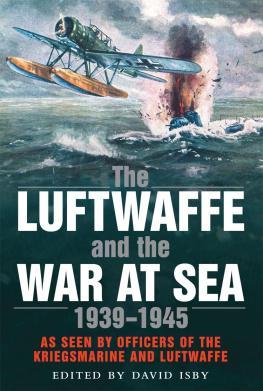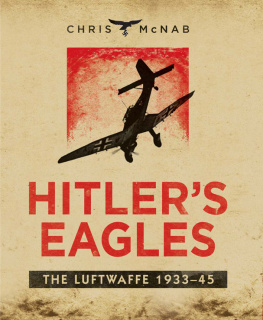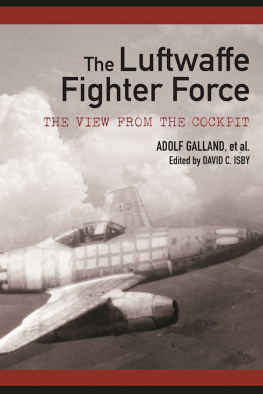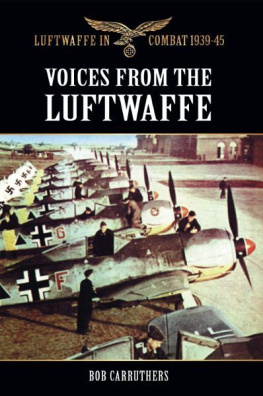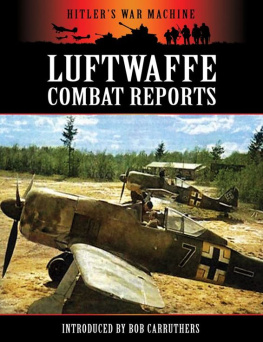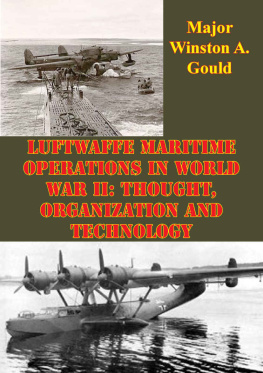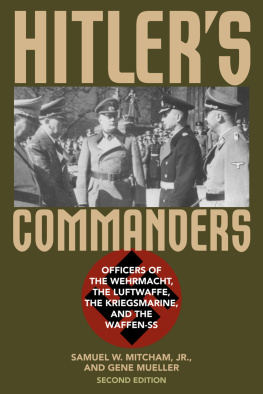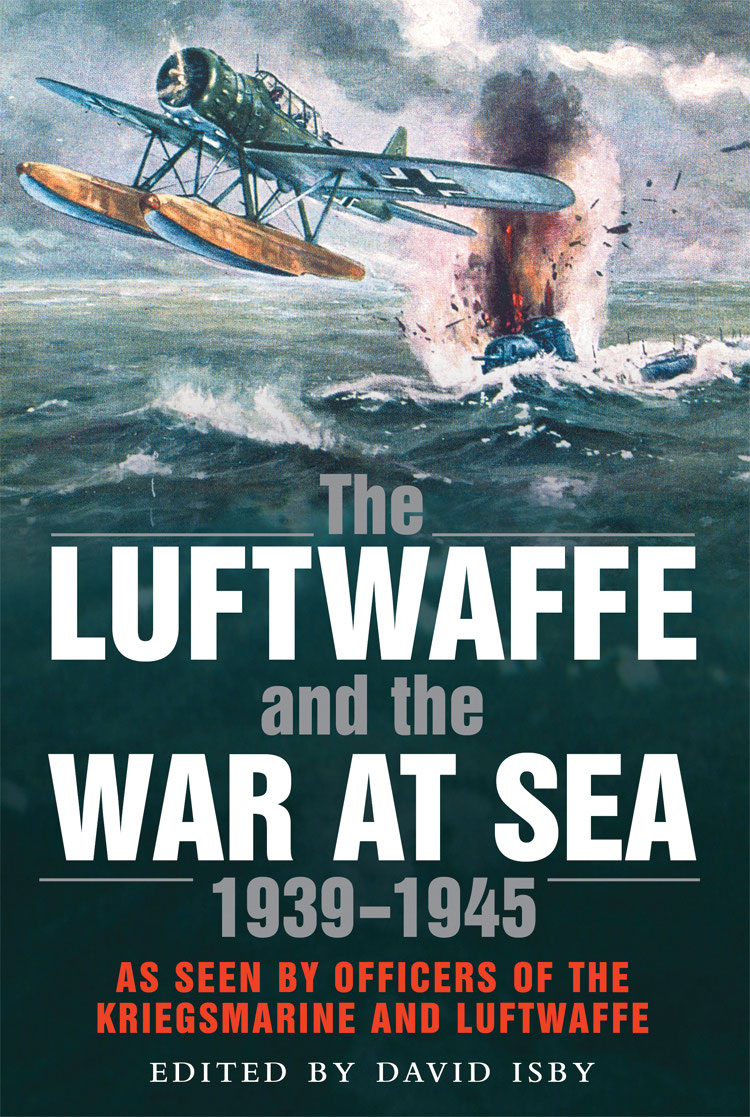THE LUFTWAFFE AND THE WAR AT SEA 193945
Frontispiece: Though developed well before the war the Heinkell HE 115C continued in front line service almost until the end of the war and was the Luftwaffes most used attack and reconnaissance seaplane.
The Luftwaffe and the War at Sea
193945
As Seen By Officers of the Kriegsmarine and Luftwaffe
Grossadmiral Karl Doenitz, Kontreadmiral Gerhard Wagner, General der Flieger Ulrich O. E. Kessler, Vizeadmiral Eberhard Weichold, Oberst i.G. Walter Gaul, Kapitan zur See Hans-Jurgen Reinecke, Korvetten Kapitan Otto Mejer, Kapitanleutnant Hans-Diedrich Freiherr von Tiesenhausen
Edited by David C Isby
Greenhill Books, London Naval Institute Press, Annapolis, Maryland
Greenhill Books
The Luftwaffe and the War at Sea 19391945
First published in Great Britain in 2005 by Greenhill Books
This paperback edition published in Great Britain in 2017 by
Greenhill Books,
c/o Pen & Sword Books Ltd,
47 Church Street, Barnsley,
S. Yorkshire, S70 2AS
www.greenhillbooks.com
Published and distributed in the
United States of America and Canada by the
Naval Institute Press,
291 Wood Road, Annapolis,
Maryland 21402-5034
www.nip.org
UK ISBN: 978-1-78438-244-5
US ISBN: 978-1-59114-595-0
eISBN: 978-1-78438-246-9
Mobi ISBN: 978-1-78438-245-2
All rights reserved
Copyright Greenhill Books, 2005
CIP data records for this title are available from the British Library
Library of Congress Control Number: 2017954810
CONTENTS
8th Abteilung, OKL
INTRODUCTION
This book is a collection of accounts written by German military officers Luftwaffe and Kriegsmarine about the naval air war in the European theater, concentrating on that in the north Atlantic and around Great Britain.
This collection is published under the same editorial rules as The Luftwaffe Fighter Force: The View From the Cockpit and Fighting the Bombers, the two previous edited volumes from Luftwaffe leadership figures that have appeared by Greenhill Press. These are largely the same format that has been used by Garland Press in its editions of some of the post-war essays by German officers and officials. The contemporary translations are used. Standardization of capitalization, spelling and terminology is left (largely) as in the originals, which leads to variations. Technical terms and abbreviations are introduced without explanation in most of these documents.
This collection is set up to be read as military history, where the Garland editions were for reference. Hence the provision of a glossary, list of contributors and illustrations. The important story is the one the Germans who were doing the flying and fighting are telling, not that told by the editor. Thus, editorial additions and alterations have been minimized and the original 1940s translations with their own problems and inconsistencies retained. Some documents here have been divided by the editor into two parts (as noted under sources). This is to help narrative flow for those reading this volume from cover-to-cover. The original documents were all extracted from those held by the US National Archives, Naval Historical Center, and National Defense University library, as specified in the note on sources. While additions such as an index, more and better illustrations, maps and charts done specifically for this volume, appendices, and other editorial apparatus and additions would have been desirable, adding them would push the sale price of this volume towards that normally associated with scholarly volumes rather than those aimed at a larger audience.
Most of the essays were written post-war for the US services by these officers, either held as prisoners of war or working under contract. Some of the chapters are wartime German documents, written for internal use by military staffs, and translated after they fell into Allied hands. The material used in this book, being written by the Germans officers that fought the maritime air war, written either during the war or immediately after, has the value of immediacy. They were done when memories were fresh and, in many cases, by those involved with the actions described. Most of those involved did not revisit this subject matter in print in any language, so this is the sum total of their contribution to the historical record. However, none of this mandates accuracy, truthfulness or completeness. While these accounts still have value today (as demonstrated by their appearance in many bibliographies), they are by no means the last word on their subject matter area. However, as the select bibliography in this volume suggests, many of the better recent works on the subject are in German and have not been translated.
This book is not comprehensive, although the provision of two sections dealing with the origins of German maritime military aviation and wartime operations provides coverage. It has focused on the Luftwaffe operations in the Battle of the Atlantic and its predecessor campaigns of 193940 because this is an area where German air operations have not been thoroughly covered in English-language operational accounts. Many maritime air operations are not covered in detail. This includes the multiyear naval-air campaign over the Mediterranean (including the siege of Malta), those over the Baltic and Black Seas, the Luftwaffes defense against Allied anti-shipping and ASW campaigns (though this was treated in The Luftwaffe Fighter Force), the operations against the Russia convoys. These are all mentioned but not discussed in detail. Each one merits a complete book on its own (the select bibliography provides suggestions).
In addition to the subject matter that could not be fitted into the current book, there are gaps in what the authors have been willing to talk about. The German involvement in the Spanish Civil War included a substantial naval air component. Air attacks on surface warships, submarines and merchant ships alike must have had an impact, but largely glossed over in these accounts. Both the guided missile and the magnetic mine each thought by many to be a silver bullet solution against Allied seapower are also only considered briefly. Other naval air operations, such as those of the Kriegsmarines catapult ships, receive little mention. Again, those looking for a more comprehensive treatment are referred to the titles in the bibliography.
The history recounted in this book has already had an effect on subsequent decisions. The US Naval Historical Team (Bremerhaven) was organized from the German naval officers that constituted the US Navys post-war historical studies and analysis staff. They effectively transitioned to thinking about the establishment of the Bundesmarine in the early 1950s (allowing the US Navy to encourage these efforts at a time when the Royal Navy remained hostile to German naval rearmament). A number of the members of this effort including Kontreadmiral Wagner and Vizeadmiral Weichold, among the authors of these studies worked closely with the Blank Office that laid the groundwork for the establishment of the armed forces of the Federal Republic of Germany in 1956.

